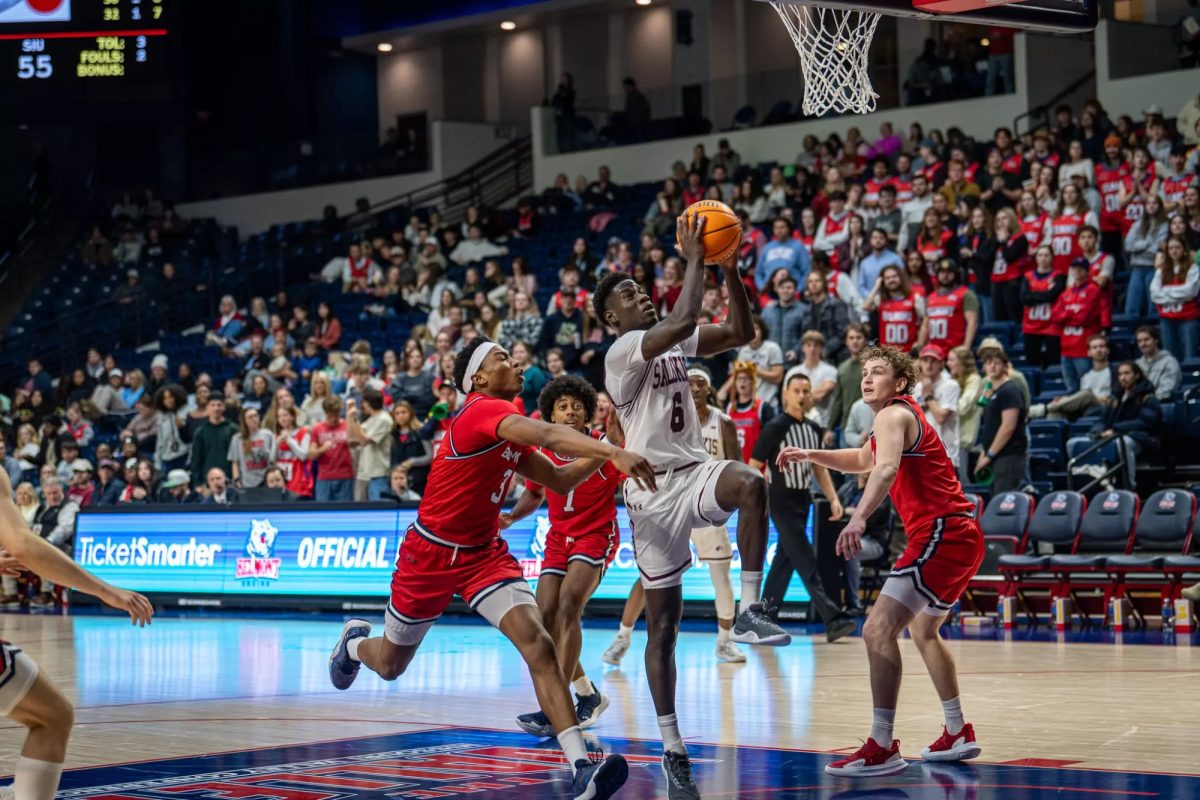Regional poll shows approval of bobcat hunting, trapping
November 9, 2015
Southern Illinoisans are statistically in favor of a new law to bring bobcat season back to the state next year, despite harsh criticism from animal-rights advocacy groups.
Gov. Bruce Rauner signed legislation in July amending the Wildlife Code to allow the hunting and trapping of bobcats statewide, which will take effect after Jan. 1 and open up a bobcat season in late 2016. It will be the first time in 40 years Illinoisans can legally hunt the once-protected species.
The bobcat — or felis rufus — can weigh anywhere from 11 to 30 pounds and gets its name from its curly tail.
Advertisement
Bobcats were officially removed from the state’s threatened species list in 1999. The Illinois Department of Natural Resources estimates a population of 3,000 to 5,000 statewide based on sightings in 99 of the state’s 102 counties and research conducted by SIUC, which showed more than 2,200 bobcats in 13 southern counties.
But animal advocacy groups are saying those numbers do not adequately represent the bobcat population in the state, and strongly oppose the methods through which bobcats are killed.
“If you’re lucky enough to spot one of these bobcats, it’s rare and it’s certainly a treasure. And that’s why we’re opposed to this,” Illinois State Director of the Humane Society Marc Ayers said.
Because of bobcat’s elusive, nocturnal nature, the Humane Society expects a the majority killed in the state will be caught with steel-jawed traps, a method considered both cruel and unsporting by the organization, Ayers said. He said the new law is not in the best interest of registered voters, citing a statewide poll conducted by the Humane Society in June that found 75 percent of surveyed voters opposed the bill.
“The only ones benefiting from this misguided legislation are those who will exploit that public resource to make a quick buck off of selling their pelts to overseas markets,” Ayers said.
Southern Illinoisans, on the other hand, are showing support of the new law.
Almost 54 percent of registered voters in the region said they strongly favored or somewhat favored the new law, while less than one-third either somewhat opposed or strongly opposed it, a recent poll by the Paul Simon Public Policy institute showed.
Advertisement*
“We’re happy to know that the species was able to come back enough to where we’re going to have a season again, not just for trappers but for hunters as well,” said Neal Graves, president of the Illinois Trapper’s Association.
Graves said he does not plan to pursue any bobcats next season because the population in East Peoria, where he resides, is not up to par.
As for opponents of the legislation, Graves said he believes some animal advocacy groups would like to outlaw all outdoor events associated with hunting, trapping and fishing.
“Those are the kind of people you’re never going to make happy,” he said.
But even if some studies show an increase in population, there have not been sufficient studies performed to determine what will happen to the ecosystem if bobcats are heavily hunted, Ayers said.
“We don’t know what’s going to happen to the species, or what’s going to happen as a result of that,” he said.
In the midst of a four-month budget impasse, Ayers said politicians should be more concerned with the state’s financial crisis than with creating new legislation for hunters and trappers.
“It’s ludicrous that a bill to allow the slaughter of bobcats — a species that the state has spent significant resources bringing back from the brink of extinction — is being treated as a priority,” Ayers said.
Bill Lukitsch can be contacted at [email protected] or on Twitter @Bill_LukitschDE.
Advertisement








